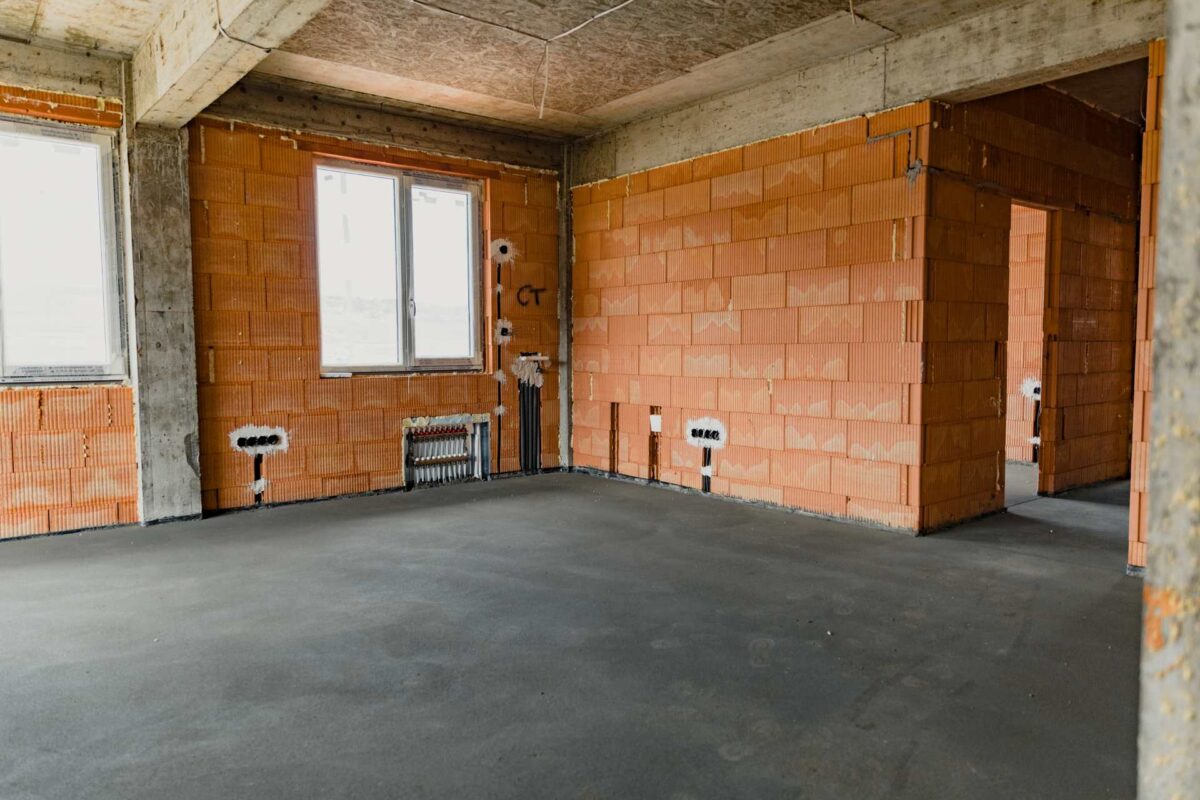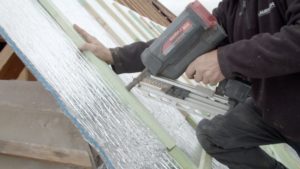How to Insulate a Concrete Floor

Concrete floors are a common feature in many commercial and industrial buildings, and for good reason: their durability and versatility are unmatched. However, concrete is a poor insulator and can lead to uncomfortable indoor temperatures and increased energy costs if not properly insulated.
Insulating a concrete floor can enhance thermal comfort, reduce energy consumption, and prevent moisture-related issues. Here’s a comprehensive guide on how to effectively insulate a concrete floor, from the experts at Quattro Insulation.
1. Assess the Existing Floor Condition
Some of the most important parts of insulating a floor happen before you begin any labor. It’s critical to assess the existing floor and look for any cracks, uneven surfaces, or moisture issues that need to be addressed.
You will need to repair any damage and ensure the floor is clean and dry before proceeding with insulation. Use concrete repair products to fill in cracks and level uneven areas. For moisture issues, consider applying a waterproofing membrane or moisture barrier to prevent dampness from affecting the insulation.
2. Choose the Right Insulation Material
Selecting the appropriate insulation material is key to achieving effective thermal performance. Several types of insulation materials can be suitable for concrete floors, including:
Rigid Foam Boards: Polystyrene or polyurethane foam boards offer high insulation value and compressive strength, making them ideal for concrete floors.
Spray Foam: This provides excellent coverage and air sealing but can be more expensive and requires professional installation.
Insulated Concrete Forms (ICFs): These are forms for pouring concrete that include built-in insulation.
Evaluate the specific needs of your project, including budget, insulation value, and ease of installation, to choose the best material for the situation.
3. Install a Vapor Barrier
A vapor barrier is an essential but often overlooked step to prevent moisture from penetrating the insulation and causing damage. This is especially important for ground-level or basement floors where moisture is more likely to be an issue.
Lay a polyethylene sheet (or other suitable vapor barrier material) over the entire concrete floor surface. Be sure to overlap the edges by at least 6 inches and seal the seams with tape to ensure complete coverage.
4. Lay the Insulation
Once the vapor barrier is in place, it’s time to lay down insulation. The exact method will vary depending on the type of insulation chosen.
If you are using…
Rigid Foam Boards: Cut the foam boards to fit the floor dimensions and lay them directly on top of the vapor barrier. Ensure a snug fit with no gaps between the boards.
Spray Foam: If using spray foam, apply it evenly over the vapor barrier according to the manufacturer’s instructions.
Insulated Concrete Forms: For new construction, use ICFs to create the formwork for the concrete floor, providing built-in insulation.
Always ensure that the insulation is installed evenly and covers the entire floor surface without any gaps or voids, no matter what type you use.
5. Add a Protective Layer
To protect the insulation and create a stable surface for flooring, add a layer of plywood, oriented strand board (OSB), or another subfloor material. This will distribute the load evenly and prevent damage to the insulation.
Lay the subfloor material over the insulation, securing it with screws or nails. It is important to double-check that the joints between the boards are tightly sealed to prevent air leakage and moisture penetration.
6. Install the Finished Flooring
With the insulation and subfloor in place, you can proceed to install the finished flooring of your choice. Common options include hardwood, laminate, tile, or carpet – make sure to choose a flooring material that is compatible with the underlying insulation and subfloor.
Follow the manufacturer’s instructions for installing the finished flooring, and pay attention to any specific requirements for moisture barriers or underlayment to ensure optimal performance and longevity.
7. Consider Additional Heating Solutions
In addition to insulating the concrete floor, integrating radiant floor heating can significantly enhance comfort. Radiant floor heating systems circulate warm water or electric heat through pipes or cables beneath the floor, providing even and efficient heat distribution.
If you opt for radiant floor heating, install the system according to the manufacturer’s guidelines before adding the insulation and subfloor layers. Combining insulation with radiant heating maximizes energy efficiency and provides superior thermal comfort.
Enhancing Comfort and Efficiency with Floor Insulation
A concrete floor can be an excellent choice for your commercial building when properly insulated for optimal thermal comfort and energy efficiency. Quattro Insulation offers a unique reflective vapor barrier insulation product designed to enhance the performance of your concrete floor. With our high-quality insulation materials, you can transform your concrete floor into an asset that supports energy savings and indoor comfort, ensuring long-term benefits for your building.


